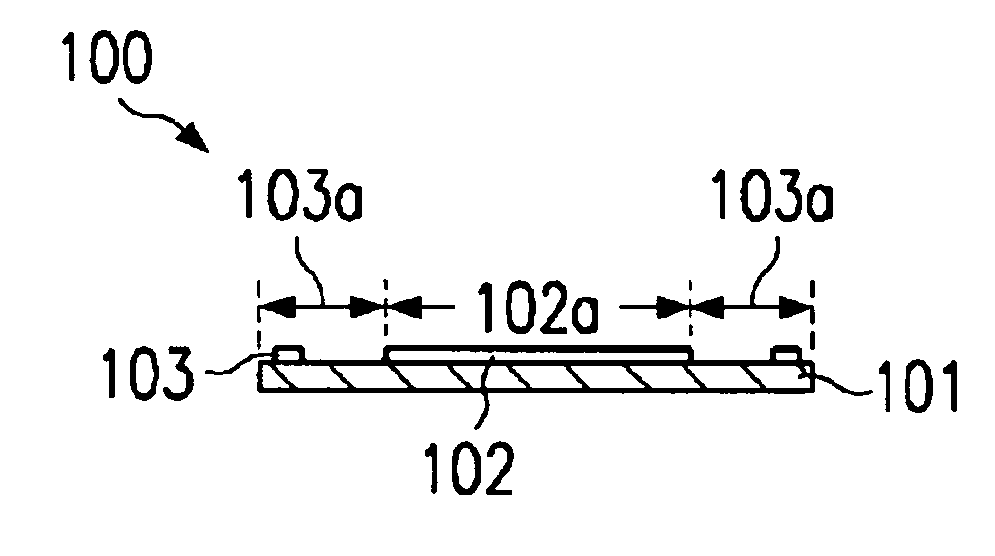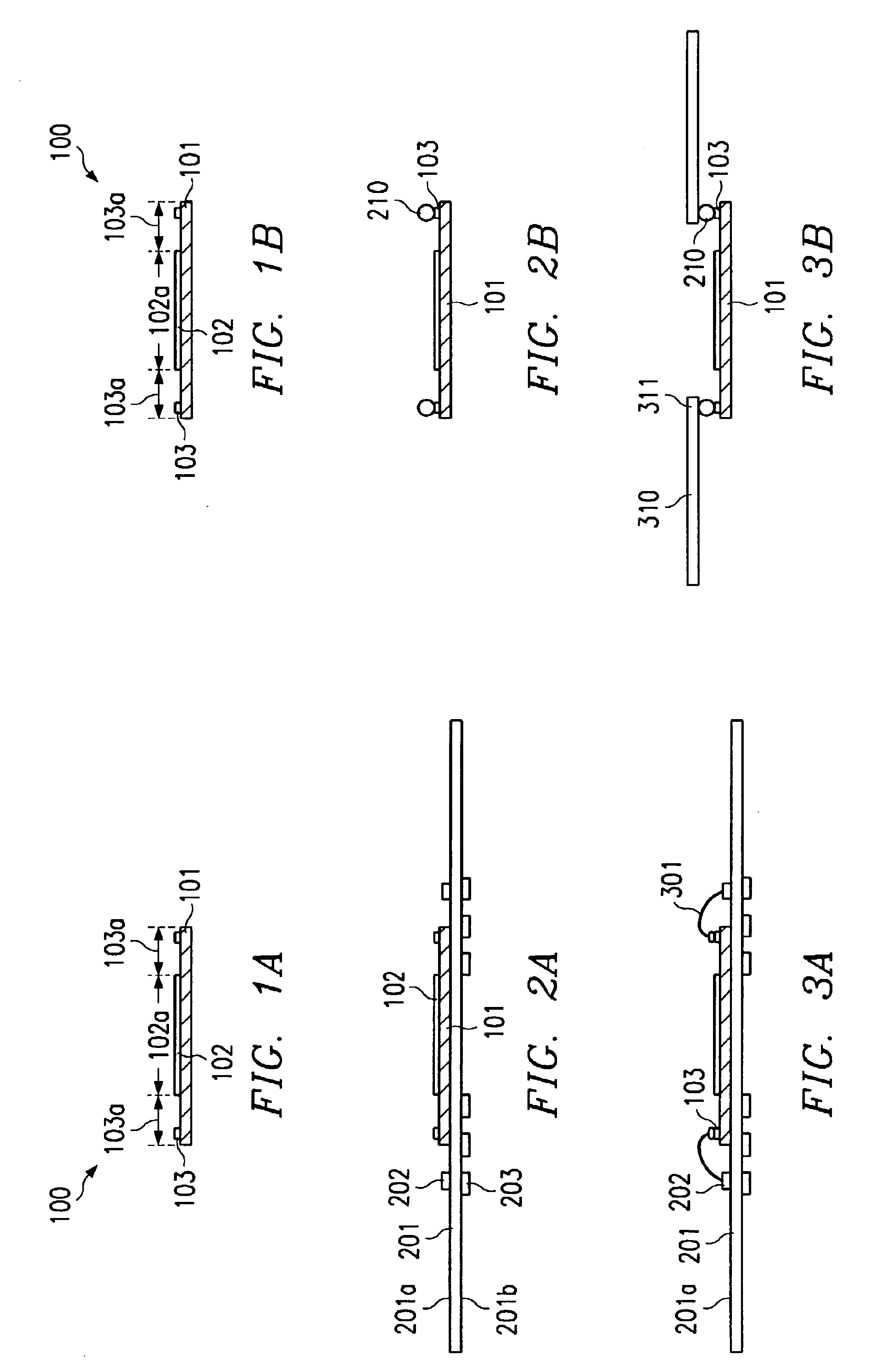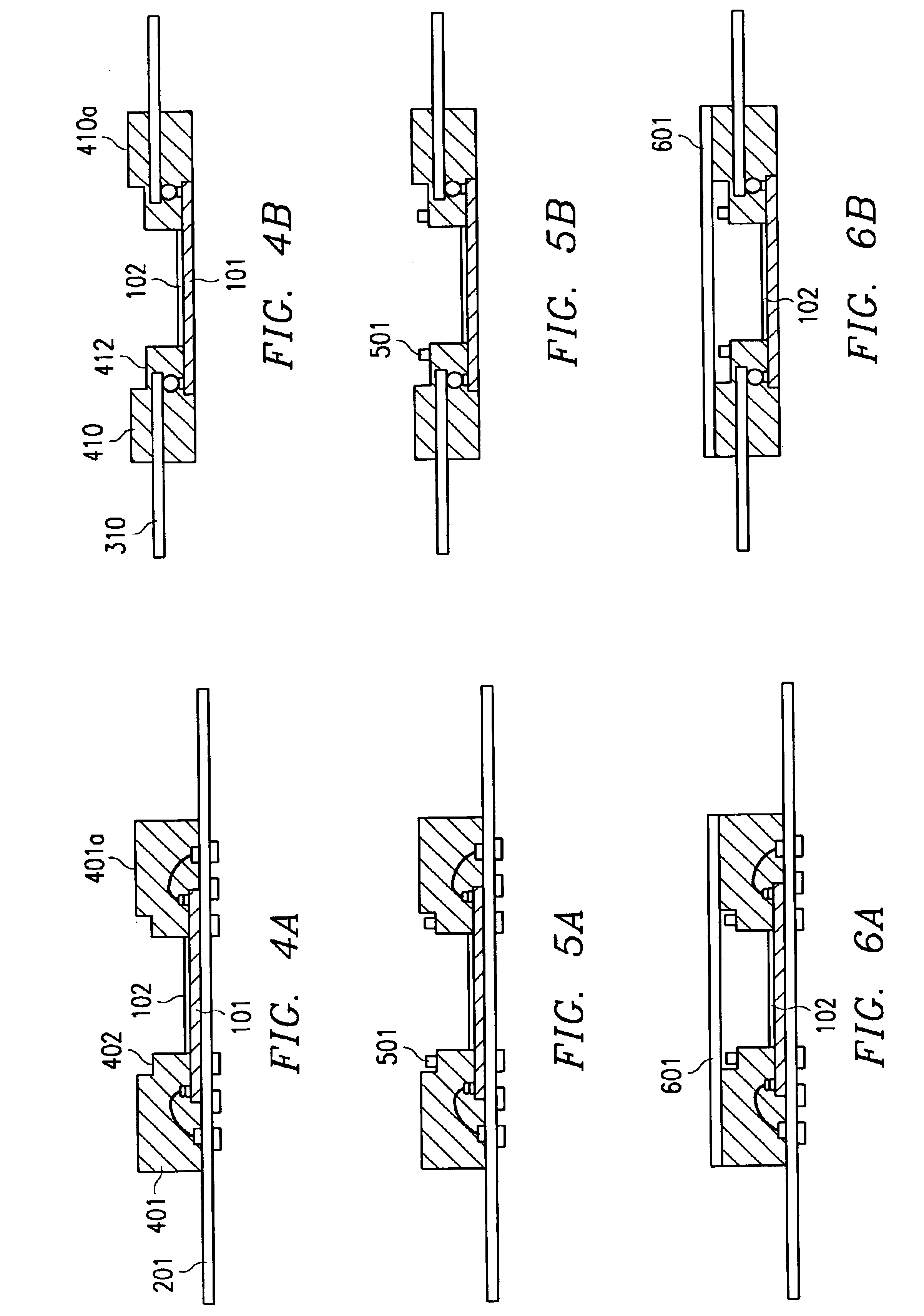Method of fabricating a molded package for micromechanical devices
a micromechanical device and packaging technology, applied in the direction of micromechanical device details, instruments, acceleration measurement using interia forces, etc., can solve the problems of low package cost, high cost of overall package structure, application and removal of micromechanical devices, etc., to avoid downtime and cost, avoid the effect of high cost and unusual flat surfa
- Summary
- Abstract
- Description
- Claims
- Application Information
AI Technical Summary
Benefits of technology
Problems solved by technology
Method used
Image
Examples
Embodiment Construction
The present invention adopts essential features of the so-called “3-P” molding technology and modifies them for preferred embodiments as illustrated in FIGS. 1A to 7A and 1B to 7B.
The term “3-P” refers to the concept of using material as “pre-packaged product”. The encapsulation material is carefully cleaned from impurities and gaseous contents, and thereafter wrapped in thin plastic films. With this protection from the environment, the material is shipped to the customer, who can use it in clean condition. The wrapped product may be fabricated in various geometrical forms, for instance in elongated, narrow shapes reminiscent of pencils. Such “pencils” are preferred shapes of encapsulation due to their ease of operation in transfer molding.
The transfer molding technology was introduced to semiconductor devices (U.S. Pat. Nos. 3,716,764 and 4,043,027) as an encapsulation process, which is both gentle and reliable, and exceedingly well applicable to mass production. Over the years, tr...
PUM
| Property | Measurement | Unit |
|---|---|---|
| Flexibility | aaaaa | aaaaa |
| Sensitivity | aaaaa | aaaaa |
Abstract
Description
Claims
Application Information
 Login to View More
Login to View More - R&D
- Intellectual Property
- Life Sciences
- Materials
- Tech Scout
- Unparalleled Data Quality
- Higher Quality Content
- 60% Fewer Hallucinations
Browse by: Latest US Patents, China's latest patents, Technical Efficacy Thesaurus, Application Domain, Technology Topic, Popular Technical Reports.
© 2025 PatSnap. All rights reserved.Legal|Privacy policy|Modern Slavery Act Transparency Statement|Sitemap|About US| Contact US: help@patsnap.com



